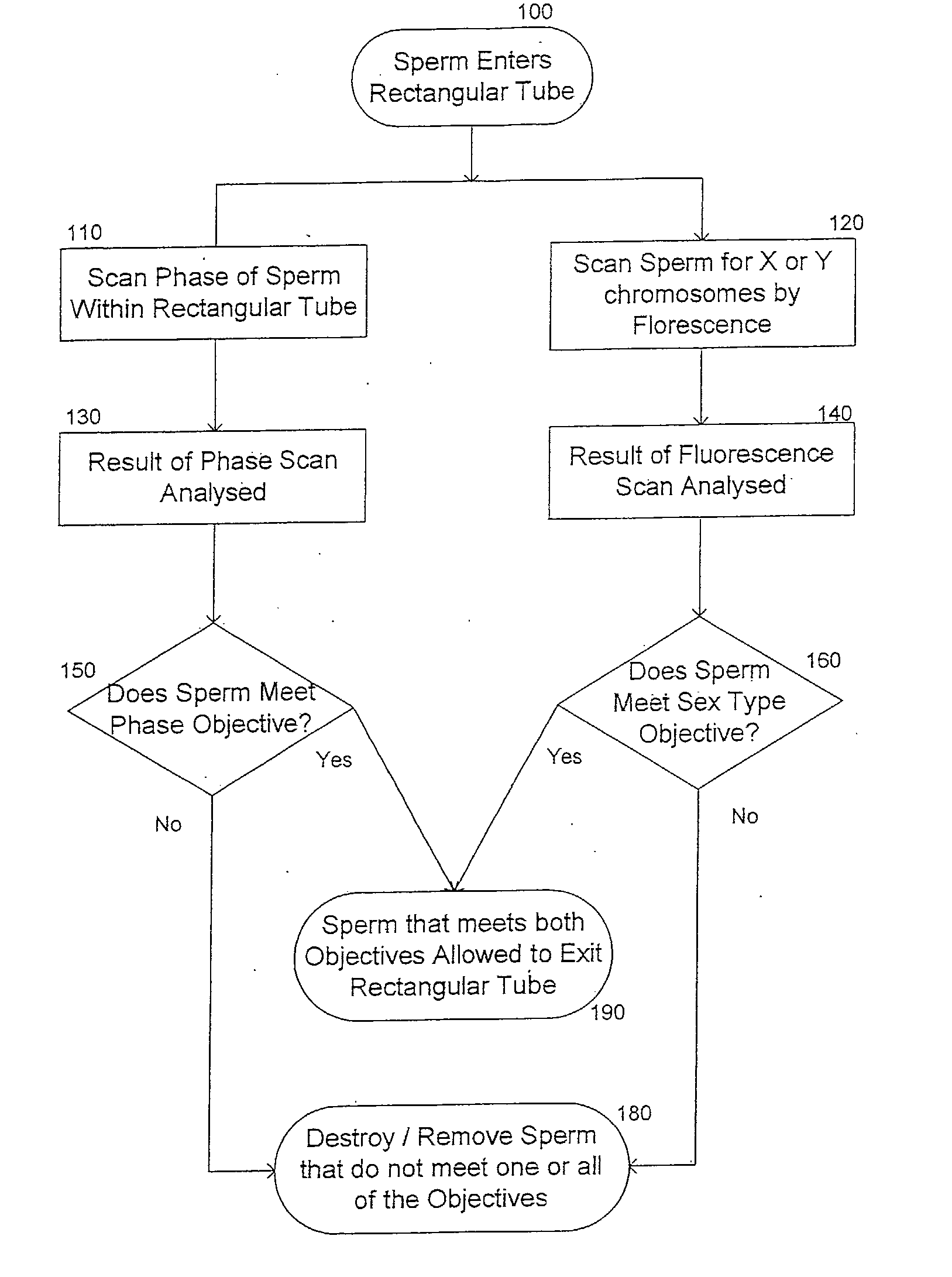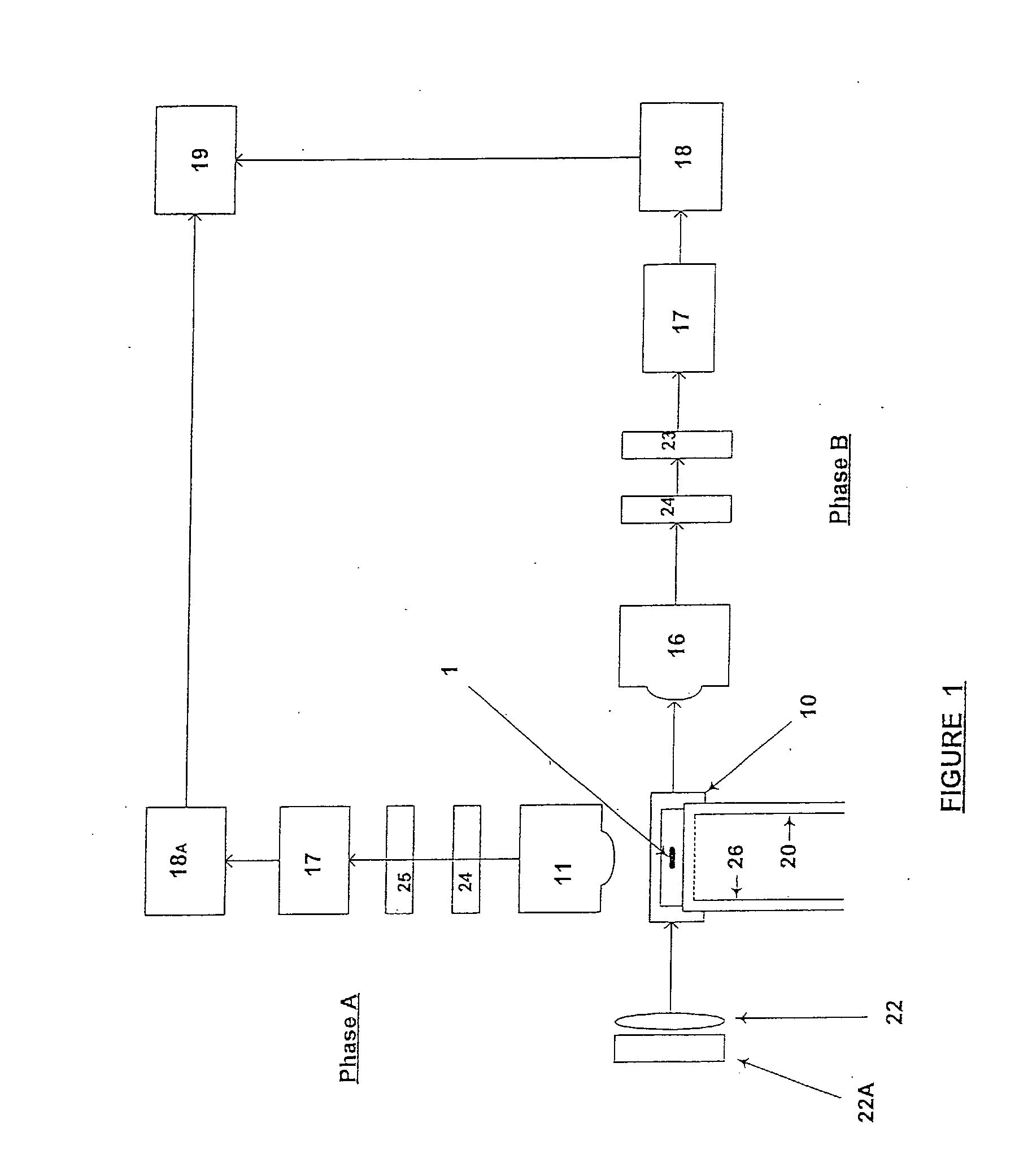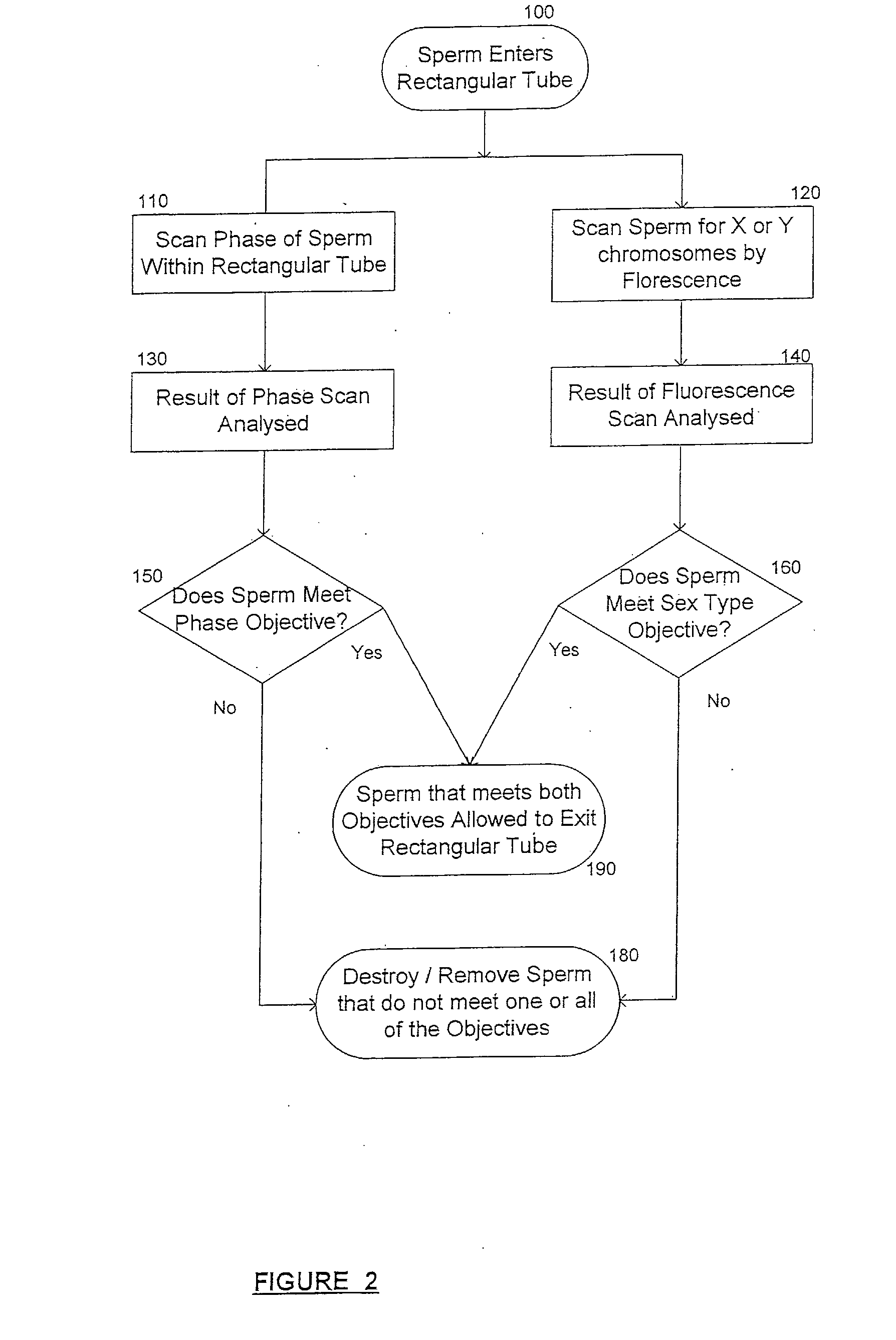Method and Apparatus For Orienting Aspherical Cells
a technology of aspherical cells and orientation methods, applied in the direction of fluorescence/phosphorescence, biomass after-treatment, instruments, etc., can solve the problems of undesirable high background noise to signal ratios, speed limitation of the johnson method,
- Summary
- Abstract
- Description
- Claims
- Application Information
AI Technical Summary
Benefits of technology
Problems solved by technology
Method used
Image
Examples
example 1
[0099]Turning now to FIGS. 1 to 6, the various apparatus used and method steps involved in the process are described in detail.
[0100]Live sperm to be differentiated according to their sex characteristic are collected by standard collection techniques and maintained in a suitable medium such as a Tris buffer medium. The DNA within the cells is stained with a non-toxic fluorochrome, preferably SYBR green I, SYBR green II, SYBR gold or Bisbenzimide H 33342. Intact stained sperm are then subjected to a fluorescence excitation energy source provided by an optical fibre or hollow glass fibre (26). The preferred excitation wavelength is about 488-497 mm and is dependent on the particular fluorochome being used. Signals emitted are collected via a fluorescence collection objective (11) or similar, measured by a photo multiplier tube (PMT) (18A) and processed / analysed by a suitably programmed CPU / analyser (19) to determine orientation of individual sperm. If after analysis the sperm cell und...
example 2
[0128]The device shown in FIGS. 3 to 6 illustrates the mechanism by which suitably stained and intact sperm are provided for testing as described previously.
[0129]In one embodiment, the delivery device is defined by an elongate tube having five functional zones. In the first zone, the orientation zone, a majority of sperm (1) exiting a sample injection tube (110), (preferably having a bevelled injection tip to minimise the effects to the laminar flow of the sheath fluid entering the nozzle via entry points (18)), are oriented into the desired position for analysis at testing zone (10). The unique internal geometry of the nozzle combined with the laminar flow of the sheath fluid create special hydrodynamic forces which provide a stream of sperm, a significant proportion of which are at the correct orientation for testing. The maintenance of a sperm's orientation is achieved via a substantially rectangular cross-sectional tube (5), which is contiguous with a nozzle (8). Downstream of ...
example 3
[0134]Having regard to FIGS. 3-6 the inventor uses the novel hydrodynamic radial orienting nozzle (8) described in Example 2 to radially orient individual sperm into a rectangular cross-sectioned capillary tube located at the nozzle “exit” (‘A-A’). The exit of the orientation nozzle (8) is contiguous with the testing zone (10). This enables spermatozoa emitted from the sample injection tube (110) to develop the ideal radial and focal plane orientation whilst passing through the nozzle as required for optical analysis. As a consequence, a much higher proportion of individual sperm entering the testing zone (10) will be correctly aligned to the fluorescence objective (11) to facilitate the identification of the chromosome complement of individual spermatozoa within the testing zone (10). Downstream of the testing zone a high-speed laser (20) permanently immobilises or destroys spermatozoa of indeterminate sex i.e. not correctly oriented and also spermatozoa of the non-desired chromoso...
PUM
| Property | Measurement | Unit |
|---|---|---|
| wavelength | aaaaa | aaaaa |
| wavelength | aaaaa | aaaaa |
| speeds | aaaaa | aaaaa |
Abstract
Description
Claims
Application Information
 Login to View More
Login to View More - R&D
- Intellectual Property
- Life Sciences
- Materials
- Tech Scout
- Unparalleled Data Quality
- Higher Quality Content
- 60% Fewer Hallucinations
Browse by: Latest US Patents, China's latest patents, Technical Efficacy Thesaurus, Application Domain, Technology Topic, Popular Technical Reports.
© 2025 PatSnap. All rights reserved.Legal|Privacy policy|Modern Slavery Act Transparency Statement|Sitemap|About US| Contact US: help@patsnap.com



